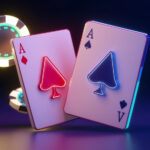When discussing the transformation of esports visuals, one cannot overlook the monumental impact of Counter-Strike 1.6’s (2003) game icons and banners. These elements not only defined the visual identity of one of the most influential games in esports history but also set a benchmark for graphic design within the gaming community. This article explores how these iconic visuals have revolutionized esports aesthetics, offering insights into their design, cultural significance, and lasting legacy in the world of competitive gaming.
The Evolution of Esports Visuals Through Counter-Strike 1.6
Counter-Strike 1.6, released in 2003, brought with it an array of distinctive icons and banners that have become emblematic of the game’s enduring appeal. These visuals served not just as mere decoration but as a foundational element that contributed to the game’s identity and the broader esports culture.
Iconography in Counter-Strike 1.6
The game icons of Counter-Strike 1.6, from the legendary bomb defusal symbol to the unmistakable CT (Counter-Terrorist) and T (Terrorist) icons, provided players and fans alike with an immediate sense of belonging and identity. Such symbols have transcended the game, finding their way onto merchandise, promotional materials, and even tattoos.
Banners and Team Spirit
The banners found in Counter-Strike 1.6, often representing teams and tournaments, played a crucial role in fostering a sense of community and competition. They were not only used in-game but also in online forums, fan sites, and at competitive events, helping to build a vibrant esports culture around the game.
Impact on Esports Graphic Design
The design elements introduced by Counter-Strike 1.6 game icons and banners have had a profound impact on the aesthetic standards within the esports industry. Their influence can be seen in the sleek, stylized logos and graphics that dominate today’s esports tournaments and online platforms.
Innovation and Inspiration
- Design Aesthetics: The minimalist yet impactful design of Counter-Strike 1.6’s icons has inspired a generation of game designers to prioritize clarity and recognizable branding.
- Community Engagement: Banners and icons have been crucial in uniting players, fostering a shared identity among diverse global communities.
- Marketing and Merchandising: These visual elements have proved to be powerful tools for marketing, providing a visual shorthand for the game that is instantly recognizable.
The Legacy of Counter-Strike 1.6’s Visuals
The legacy of Counter-Strike 1.6’s game icons and banners extends far beyond their aesthetic appeal. They have become cultural touchstones within the esports community, symbolizing the game’s pivotal role in shaping competitive gaming. As esports continues to evolve, the visual language established by Counter-Strike 1.6 remains a foundational element, influencing game design, fan engagement, and the visual communication of esports across the globe.
Preservation and Nostalgia
Today, the game icons and banners of Counter-Strike 1.6 are preserved not only through the game itself but through various forms of digital and physical memorabilia. They evoke nostalgia and offer a window into the early days of esports, reminding fans and players of the journey from humble beginnings to the global phenomenon esports has become.
Continued Influence
| Aspect | Influence |
|---|---|
| Game Design | Pioneering clear, iconic visual elements that enhance gameplay and spectator experience. |
| Esports Culture | Sustaining a vibrant community identity and heritage that new and old fans appreciate. |
| Marketing | Setting benchmarks for the promotion of games, teams, and tournaments. |
In conclusion, the game icons and banners of Counter-Strike 1.6 have revolutionized esports visuals, setting a high standard for design and community building within the gaming world. Their influence continues to resonate, proving that great design can indeed stand the test of time and shape the future of digital entertainment.






